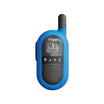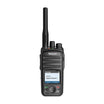Frequency response is a crucial parameter in audio systems, defining how they reproduce the range of audio frequencies from the lowest bass to the highest treble. It's essentially a map that shows how a speaker or system responds to different frequencies, indicating the consistency of sound pressure and phase across the spectrum.
When an audio signal is sent to a system, the output through speakers can vary depending on the frequency. This variation is what we term as frequency response. A flat response, where the system reproduces all frequencies equally, is often the goal, ensuring that the sound remains true to the original recording.
However, no system is perfect, and the frequency response curve can show peaks (resonances) and dips (nulls), highlighting the system's strengths and weaknesses in handling various frequencies. These characteristics significantly affect the audio quality, with some frequencies potentially being emphasized or attenuated.
Understanding the frequency response of a system is vital for audio professionals and enthusiasts alike. It helps in making informed decisions when selecting audio equipment, ensuring the chosen gear meets the desired sound reproduction standards. For instance, a speaker with a broad frequency response range can deliver a fuller, more detailed sound, capturing the nuances of the audio spectrum.
In the end, the goal is to achieve a balance that delivers clear, accurate sound across all frequencies, creating an immersive listening experience that captures the essence of the original performance or recording. Frequency response is not just a technical specification; it's the heart of the audio experience, shaping how we perceive sound in different environments.











































